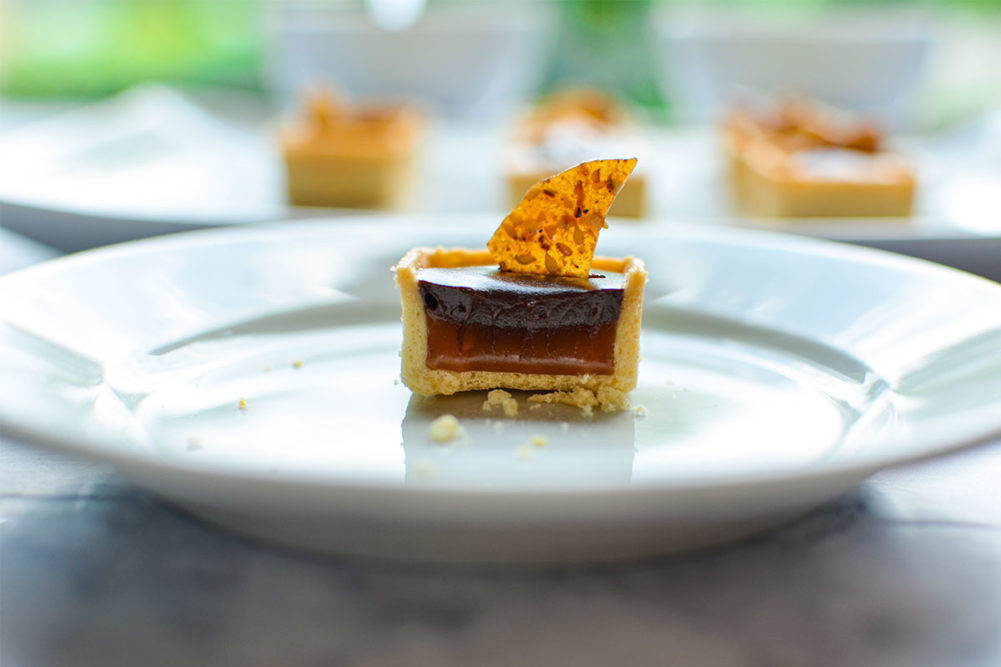Bakers interested in making clean label reduced-sugar baked foods need to replace not only the sweetness but the functionality that sugar brings to foods.
Chicory root fiber brings a slightly sweet and neutral taste, dietary fiber and functionality, said Brigitte Peters, technical sales support, Sensus America.
“It’s a bulk ingredient and can replace sugar one-to-one without affecting the volume of the product. It works quite the same as sugar. One of the concerns might be that it gives some coloring, more than sugar,” she said. “However, adjustments in the baking process can cover this.”
Chicory fibers work well with natural and high intensity sweeteners, said Kyle Krause, product manager, functional fibers and carbohydrates, North America, Beneo.
The company’s chicory root fibers inulin and oligofructose “are all natural, non-GMO and deliver on digestive health and other benefits as associated with being a prebiotic. As soluble fibers, they’re easily used in many applications,” he added.
Allulose is 70% as sweet as sugar but provides 90% fewer calories, provides functionality and “is very similar to regular sugar in chemical terms,” Dr. Yin said.
It is a rare sugar that occurs naturally in wheat and dried fruits like jackfruit, figs and raisins, and does not contain sugar alcohols, said Sarah Diedrich, marketing director, sweetening solutions and fibers, ADM.
“While allulose is structurally similar to sugar, it’s not listed as an added sugar on product labels and has fewer calories,” she added.
And it is a good choice to pair with high-intensity sweeteners, said Casey McCormick, director of product development at Sweegen.
“It’s best to work in a creative building block approach by starting with a clean high-intensity natural sweetener such as new generation stevia Rebs M, D and E as the foundation and build back the texture, bulk and mouthfeel into the product,” he said.
Some products bring a variety of benefits. Bioneutra’s VitaFiber IMO and PLUS mask the aftertaste of natural high-intensity sweeteners and reduce the need for extra binders and taste modulators, said Sheri O’Brien, vice president, sales and marketing at BioNeutra North America Inc.
Both are “plant-based sweeteners with sugar-like functionality and are a vegan-friendly source of prebiotics. Both are highly effective for adding bulk to formulations and with humectancy and browning capacity similar to sugar,” she added.
Other products can provide functionality with sugar-
reduced baked foods.
“Gums, emulsifiers and enzymes are helpful to improve machineability or reduce the negative impacts of sugar reduction on a product’s texture, mouthfeel and shelf life,” Dr. Liu pointed out.
ADM/Matsutani LLC have created Fibersol, which is a line of soluble dietary fibers that bakers can use to reduce sugar by creaming it with butter or oil or by blending it with dry ingredients for consistency and texture in baked goods.
“Fibersol is also highly soluble, heat, acid, shear, freeze-and-thaw stable and has excellent clarity, low viscosity and neutral taste,” Ms. Diedrich said. “These characteristics help limit the need for additional mouthfeel enhancers, emulsifiers, maskers and other formulation adjustments, which can help with fewer ingredients being listed on labels.”
To combat off-notes, Icon Foods turns to sweetness modulators.
“We use thaumatin and naringin, both natural extracts that can mask off-notes and extend the sweet technical effect that can bury funky flavors,” said Thom King, chief executive officer and food scientist at Icon Foods.
The move to reduce sugar in baked foods is accelerating as Americans strive to improve their diets. Companies have many options at their disposal, although every solution poses challenges. But choosing the right one or mixing two or more together can yield a product with lower sugar that satisfies the sweet tooth and is kind to the waistline.
This article is an excerpt from the December 2021 issue of Baking & Snack. To read the entire feature on Sugar Reduction, click here.

